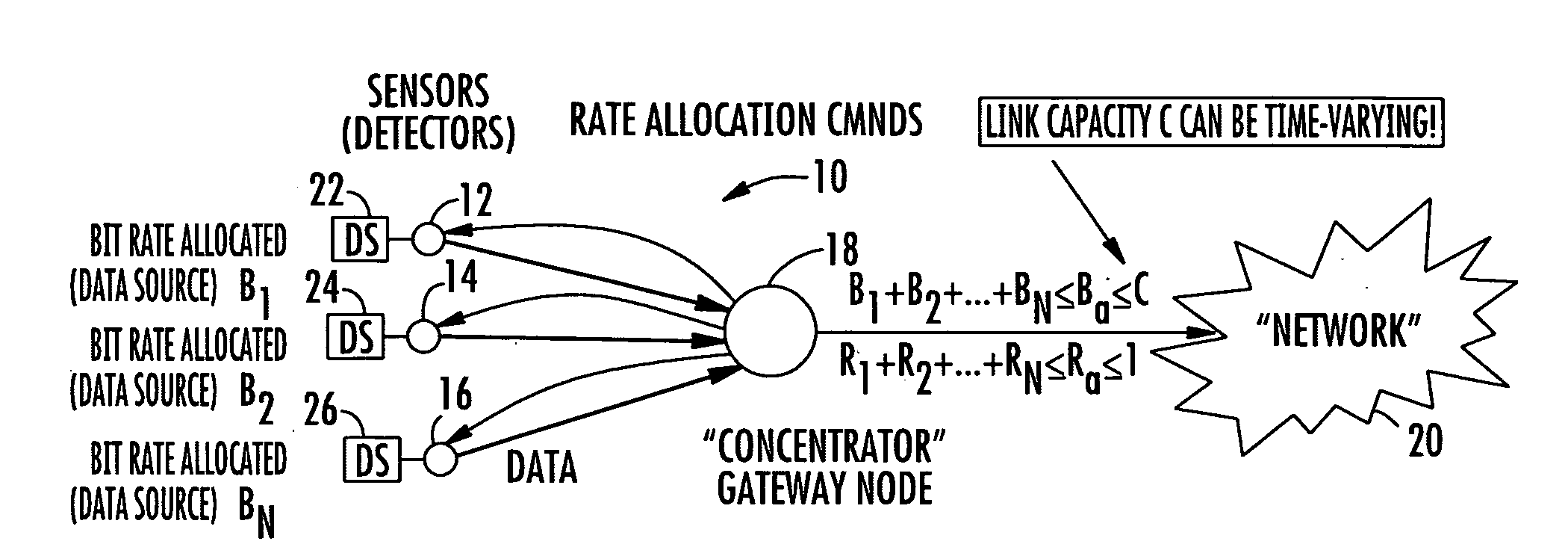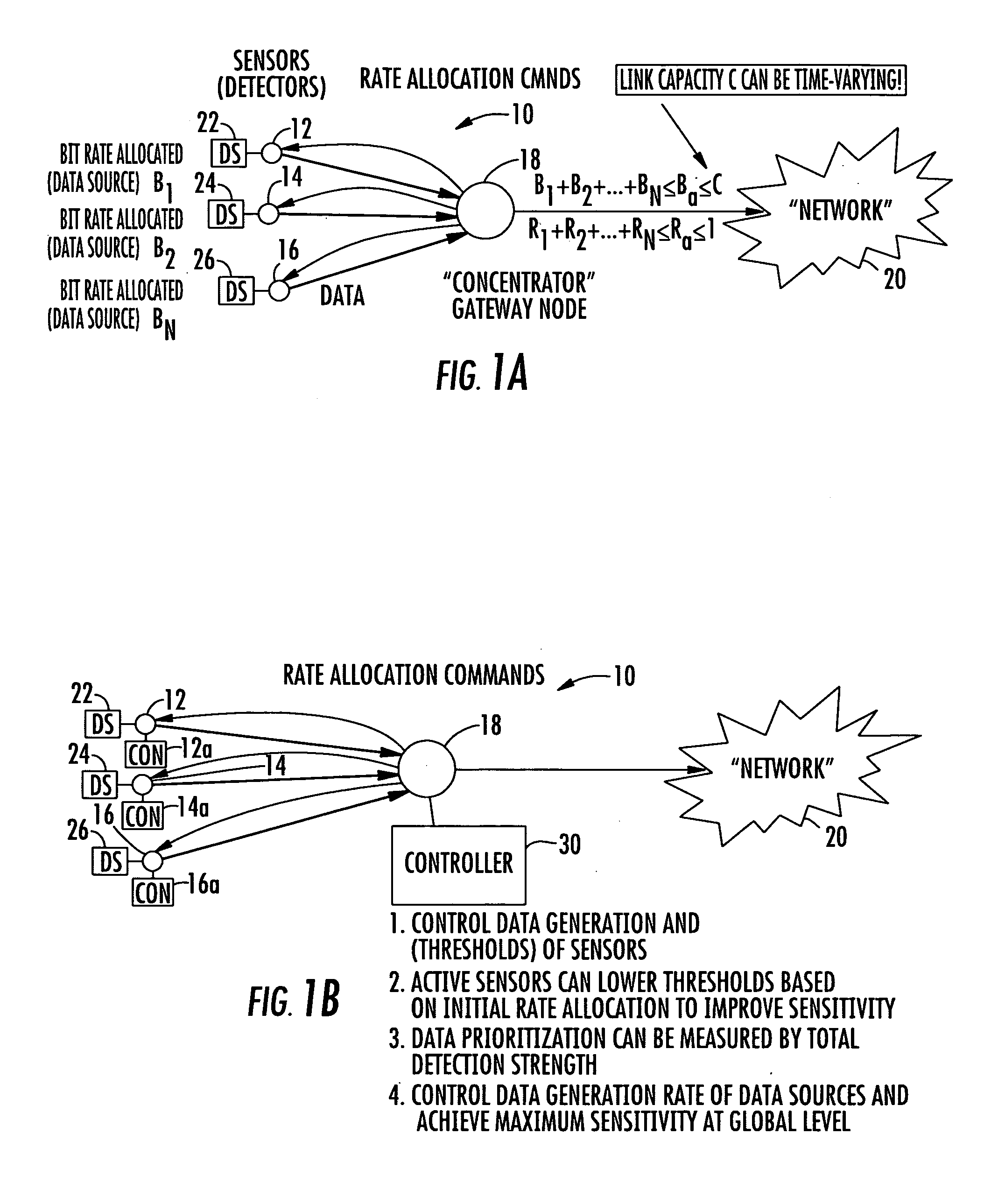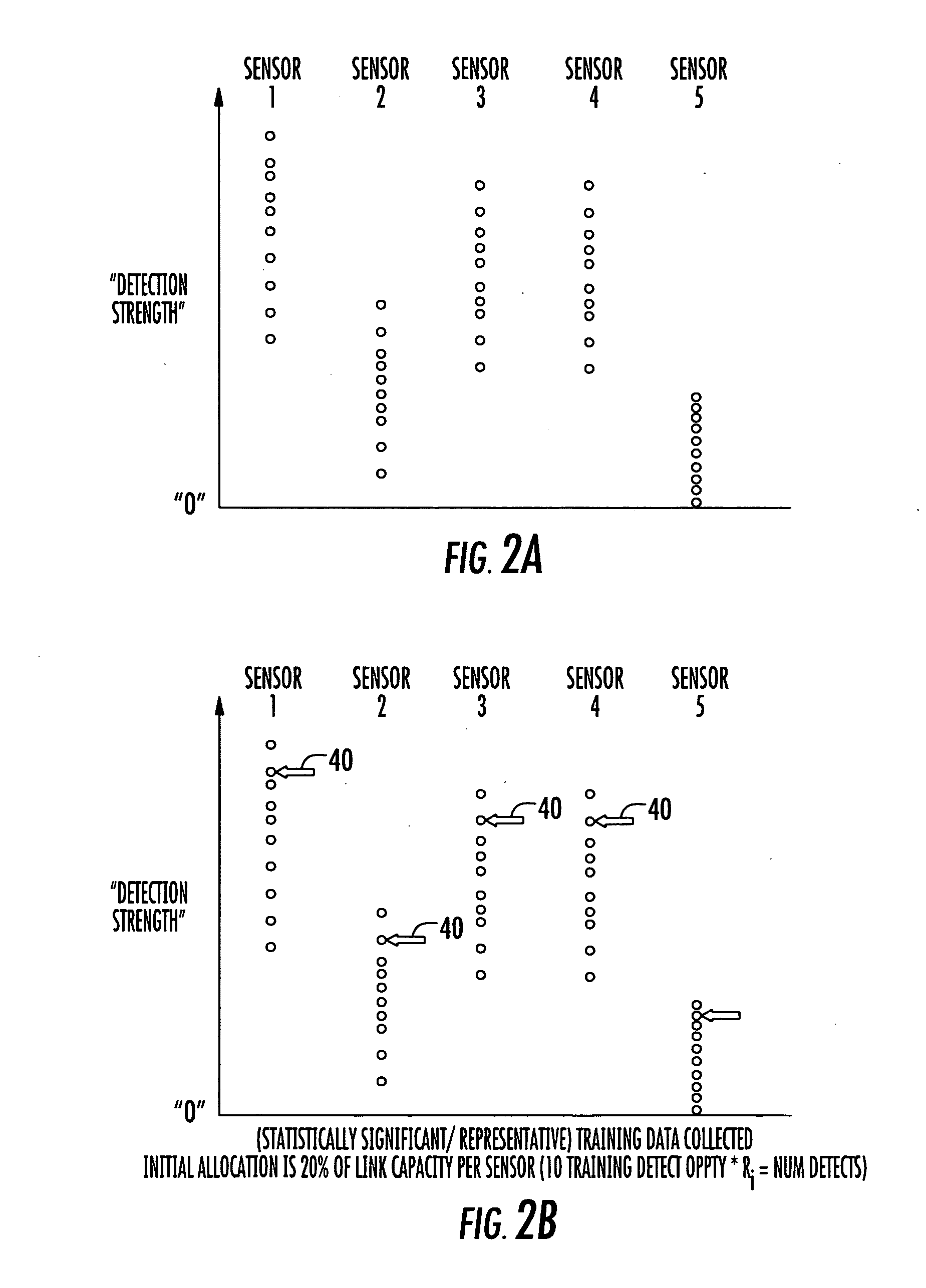System and method for multi-channel data-adaptive thresholding for shared channels with time-varying rate constraints
a multi-channel data and rate constraint technology, applied in data switching networks, frequency-division multiplexes, instruments, etc., can solve the problems of overflow of routing, waste of bandwidth, and overflow of communication bandwidth, so as to maximize sensor utility
- Summary
- Abstract
- Description
- Claims
- Application Information
AI Technical Summary
Benefits of technology
Problems solved by technology
Method used
Image
Examples
Embodiment Construction
[0023]Different embodiments will now be described more fully hereinafter with reference to the accompanying drawings, in which preferred embodiments are shown. Many different forms can be set forth and described embodiments should not be construed as limited to the embodiments set forth herein. Rather, these embodiments are provided so that this disclosure will be thorough and complete, and will fully convey the scope to those skilled in the art. Like numbers refer to like elements throughout.
[0024]It should be appreciated by one skilled in the art that the approach to be described is not limited to any particular communication standard (wireless or otherwise) and can be adapted for use with numerous wireless (or wired) communications standards such as Enhanced Data rates for GSM Evolution (EDGE), General Packet Radio Service (GPRS) or Enhanced GPRS (EGPRS), extended data rate Bluetooth, Wideband Code Division Multiple Access (WCDMA), Wireless LAN (WLAN), Ultra Wideband (UWB), coaxi...
PUM
 Login to View More
Login to View More Abstract
Description
Claims
Application Information
 Login to View More
Login to View More - R&D
- Intellectual Property
- Life Sciences
- Materials
- Tech Scout
- Unparalleled Data Quality
- Higher Quality Content
- 60% Fewer Hallucinations
Browse by: Latest US Patents, China's latest patents, Technical Efficacy Thesaurus, Application Domain, Technology Topic, Popular Technical Reports.
© 2025 PatSnap. All rights reserved.Legal|Privacy policy|Modern Slavery Act Transparency Statement|Sitemap|About US| Contact US: help@patsnap.com



